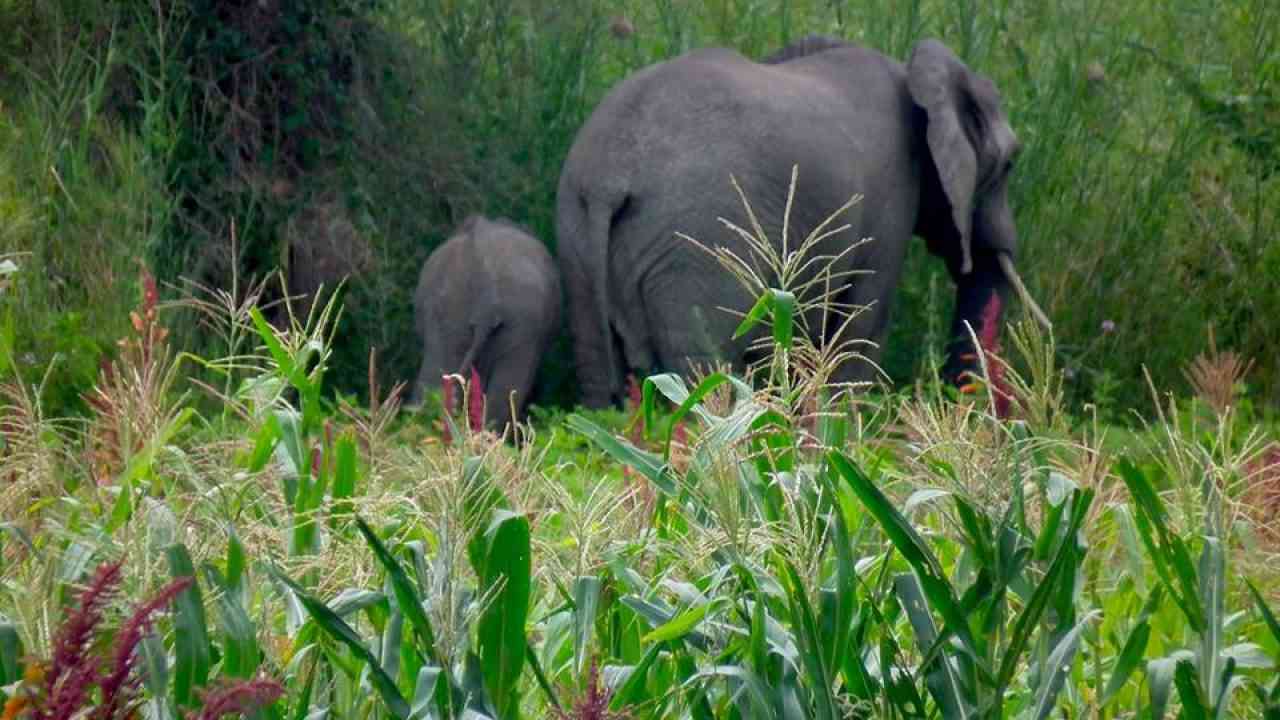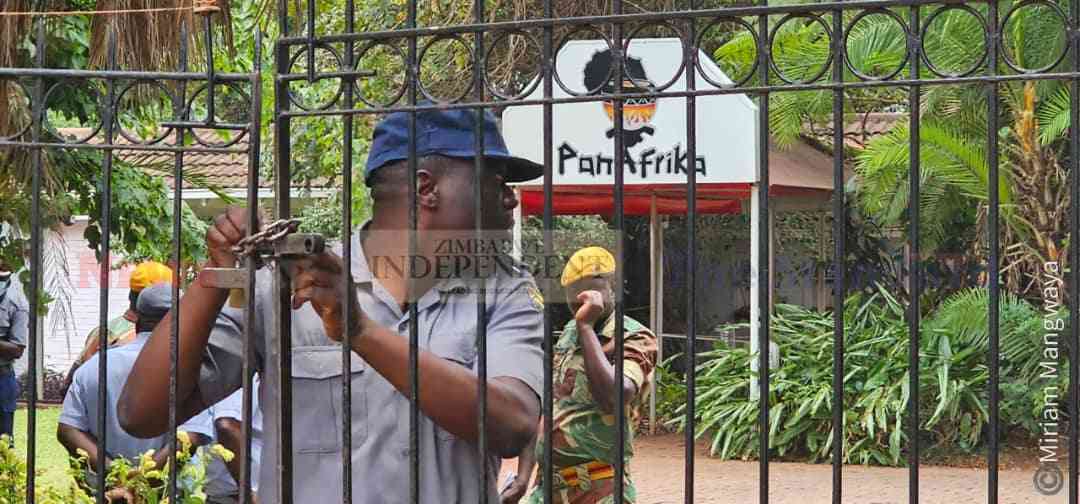
Moongi Munsaka, a 45-year-old smallholder farmer from Simchembo Village in Binga district, northern Zimbabwe, is up all night defending and shooing away elephants, which raid her crops, and sometimes hyenas trying their luck to prey on her livestock.
Her experience is nothing new for communities living adjacent to wildlife sanctuaries, a key factor contributing to increased food shortages in dry and hot areas of the country.
"During the last farming season, elephants visited my fields and destroyed maize crops estimated at 50 bags,” said Munsaka. These wild animals are keeping me awake at night as I try to salvage my crops from the monsters," said Munsaka.
As if damage to crops by elephants was not enough, hyenas killed her only two cows and five goats.
This is why efforts by the seven-year European Union funded Sustainable Wildlife Management (SWM) programme to develop Human-Wildlife Conflict (HWC) mitigation tools may provide the solutions that Munsaka and other community members have longed for.
Training sessions on managing HWC have been conducted in three wards (wards 3, 4, and 5 in Binga district) with the hope that communities will better manage and control conflict with wild animals and thereby help conserve their natural resources.
The SWM programme is an international initiative to improve the conservation and sustainable use of wildlife in forest, savannah, and wetland ecosystems.
The Food and Agriculture Organisation of the United Nations (FAO) is coordinating the initiative, and in Zimbabwe it is being implemented by the French Agricultural Research Centre for International Development (Cirad) with support from the Binga Rural District Council (BRDC) and the Ministry of Environment, Climate, Tourism, and Hospitality Industry.
- CCC urged to push for dialogue over reforms
- A peep into Matenganyika’s artistic closets
- The Bioskop Short Film Competition is back
- Mangwe farmers benefit from agric projects
Keep Reading
In Zimbabwe, the initiative aims to promote the establishment of community conservancies to improve land-use planning and wildlife management by communities.
One of the community conservancy initiatives is to work with traditional chiefs, local communities, and government authorities to introduce affordable and appropriate solutions to protect livestock and crops from wild animals.
In 2022, the SWM Programme and the Agricultural Advisory and Rural Development Services (AARDAS), the government’s agricultural extension arm, introduced farmer field schools, a group-based adult learning approach that involves helping farmers to independently investigate and solve problems.
Farmers frequently gather with a facilitator to observe, converse, question, and learn about HWC. It is from these field schools that HWC strategies have been developed and tested.
As part of efforts to safeguard crops from elephants, 900 community members from wards 3, 4, and 5 have received training on the construction of mobile biomas, chili fences, and watchtowers. The next trainings will introduce another range of additional mitigation techniques such as the use of chili pepper bricks and reflective fencing to prevent crop destruction by elephants.
"I genuinely appreciate the training received from the SWM Programme. I now know how to secure my field with a chili fence. Such activities will reduce the need for night-time field surveillance. This simple and affordable technology will work for us while we do other productive tasks and rest at night”, said Munsaka.
Rural communities in Binga district depend on farming and livestock rearing for food and to meet their basic needs.
However, when elephants, baboons, and bush pigs are unable to access their usual food sources, they turn to crops, especially when fields are close to wildlife corridors. This creates considerable friction between the local people and wildlife.
Communities in Binga lose significant amounts of food crops every year due to elephants. Crops that would have otherwise have been sold or stored for the future is destroyed, and this can seriously impact already vulnerable household economies.
"Had elephants not damaged my maize crop in 2022, I would have sold the harvest to the Grain Marketing Board and received about US$500,” said Sabina Mudenda of Sinasengwe Village.
"This was intended to support me and my family," she added.
According to BRDC and the SWM Programme, the training sessions provided practical, cost-effective and contemporary solutions to mitigate HWC.
"People relied on beating drums or making other noises to scare away the elephants before the advent of these valuable technologies,” said Faizan Usman, HWC officer for the SWM programme.
“It appears, though, that the elephants had become accustomed to the sounds and were no longer frightened.
"But with the support of science and technology, we now advise farmers to deploy simple technologies like chili fences, which will help deter the elephants while protecting farmers' crops.”
The trained farmers also received the tools needed to manufacture chili fences and chili bricks. These include buckets, chili oil, protective equipment, dried ground chili, and nylon string.
According to Tinashe Farawo, Zimbabwe Parks and Wildlife Management Authority spokesperson, a total of 68 lives were lost to wildlife attacks in the country in 2021 and 66 in 2022.
To help solve the problem, the government approved the establishment of the human-wildlife relief fund for victims.
It is based on a self-financing model where proceeds from hunting and other crowd-funding activities would be pooled for compensation purposes.
- Martha Katsi is the SWM programme communication officer










